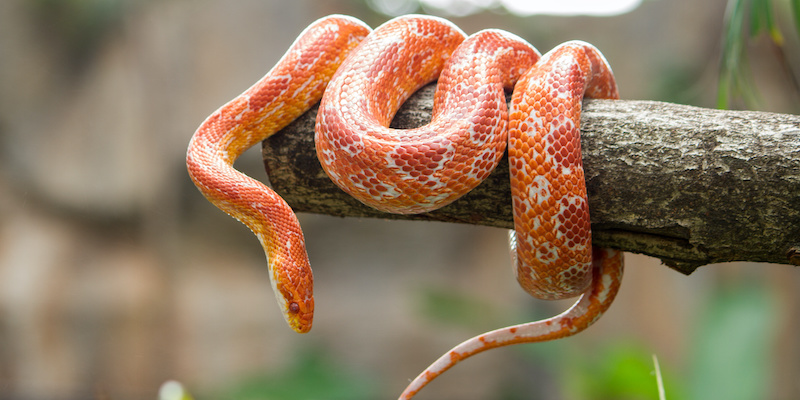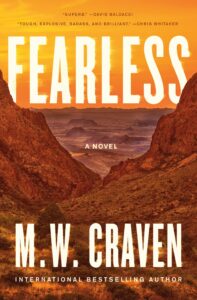I’ve always loved snakes. Don’t know why. My sisters didn’t. My sisters feared snakes. Which is irrational, as there aren’t any snakes in the UK. Well, that’s not entirely true—we do have the non-venomous grass snake (Natrix helvetica) and smooth snake (Coronella austriaca), and the ever-so-slightly venomous adder (Vipera berus), but they’re so rare and so secretive, you never see them. And on the odd occasions they do come out to bask, people crowd them like they’ve seen fucking Bigfoot.
But I digress. For reasons unknown, ever since I can remember, I was obsessed with an animal I’d never seen. I had books on keeping them as pets (‘Never gonna happen,’ my mother said), I watched every documentary I could, and I talked about little else.
In 1984 I joined the British Army (aged 16), and I still hadn’t seen a snake. Not even in a zoo. They were still this fascinating, almost mythical animal. I trained as an armourer for two and a half years (the military equivalent of a gunsmith), only because the army didn’t want snake handlers. I got posted to Germany (about the same number of snakes as the UK) and I did my army thing. But then, the most wonderful thing happened—during a posting back to the UK my unit was rotated to Belize for a tour.
I was finally going to the same part of the world where snakes lived. And not just half a dozen snakes. Belize had sixty species. Sixty. Including my favorite at the time, the boa constrictor. I was off to Belize for six months.
And what a six months I had. My unit was posted to Salamanca Camp, the smallest, most inaccessible military camp in the whole country. It was a twelve-hour drive from the airport, ten hours of which was along barely accessible mud roads. The camp itself was half a dozen huts, a helicopter landing zone (also the football pitch) and the mud road in and out. It was considered the worst place to be in Belize as there was nothing to do. No beaches, no idyllic islands, no interesting towns or villages to visit. It was a jungle camp in every sense of the word.
I didn’t think it was the worst place to be, though. I thought I’d died and gone to heaven. Whenever I could, I was out in the jungle lifting rocks, rooting through leaf piles, climbing trees, annoying the shit out of the local flora and fauna. How I didn’t get bitten, I’ll never know. I don’t know what species the first snake I saw was. It was whip-thin and basking on an old dirt track I was jogging along. It figure-eighted its way back into the jungle as soon as it saw me, so I had no chance of catching it. I reckon it was a speckled racer (Drymobius margaritiferus) as it was black with blue and yellow markings, and they’re known for frequenting forest edges, even roads. Whatever it was, it was a huge moment in my life. A genuine thrill.
Over the next six months I saw many snakes—boa constrictors by the dozen (and I never once got tired of them), eyelash vipers (look, don’t touch), milksnakes, coral snakes (another look, don’t touch snake), whip snakes, hog-nosed vipers, cat-eyed snakes, countless others I failed to identify. I even had a close encounter with the dreaded fer-de-lance (Bothrops asper), dubbed the ultimate pit viper due to its large size, large fangs, large venom yield and highly aggressive nature, and the only snake that had a page to itself in our pre-deployment briefing pack. It was entwined amongst the leg-press weights on the multigym, no doubt waiting to bite me on the ankles. Luckily, I was so used to watching out for snakes by then, I saw it immediately. Nice try, Mr Fer-de-lance.
I returned to the UK, tired, tanned and happy, my obsession with snakes barely sated. I spent a few more years in the army then decided it was time to do something different—I chose social work, with specialisms in criminal justice and substance abuse (after qualifying I would go on to be a probation officer for 16 years). By this time, the UK market was wising up to the fact that there was money to be made from selling snakes as pets.
And in even better news, there was brilliant reptile shop within walking distance of my student digs in Newcastle (a city in the far north of England).
I walked into that reptile shop and immediately felt at home. Like I was Norm walking into Cheers. I could have stayed for hours talking to the customers and staff. I did stay and talk to the customers and staff for hours. Eventually, with the sun setting and the shop closing, I left with a handmade vivarium, a heat mat, a water bowl and other accessories, and, in an old pillowcase, a beautiful three-foot-long corn snake. Oh, and twenty frozen mice. Mustn’t forget about the frozen mice.
I didn’t watch TV that week. I barely read. I tinkered with ‘Snakey’s’ (yeah, yeah, yeah, bite me) driftwood, I changed his substrate, and I freshened his water. And then, in what would become our Friday night ritual, I fed him a mouse. With me about six inches from his head, I watched as he unhooked his jaws and swallowed the thing whole.
And the whole thing was kinda perfect. Everything I’d hoped it would be and more.
Spin forwards a couple of years. I have a medium sized collection now. Nothing too difficult to keep, mainly North American colubrids—half a dozen corn snakes, a breeding pair of gopher snakes, a beautiful milksnake, some kingsnakes (I had a desert kingsnake which bit me every time I picked it up. Every. Single. Time.), a western hognose and a royal python.
It was getting to be an expensive hobby, though. The snakes, their food, the substrate and the additional vivariums. Our heating bill increased. A hundred other little things that amounted to too much. I was still a student social worker. I barely had a pot to piss in or a window to throw it out of. I had to make a decision: reduce or increase my collection. Reducing it would make my hobby affordable; increasing it might allow me to make a little money and offset the larger expenses. And if I scaled up, I might even make enough to afford my dream snake—which at the time was a green tree python.
It didn’t seem like a hard decision at all.
Three or four years pass. I’m a full-time probation officer. I have 100 breeding pairs of corn snakes. I understand snake genetics. I can predict what two snakes’ offspring will look like (there are charts) and I know how to exploit valuable mutations. I’m now one of the biggest private reptile breeders in the country. I supply hatchlings to most of the shops in the north of England and the south of Scotland. I’m selling surplus stock to the wholesalers, the guys who supply the big chains. I’m making more than enough money to pay for my hobby. It’s worked out exactly as I’d hoped.
Until one Friday night (which is still feeding night) I realize something—I’m not enjoying it anymore. Probably haven’t for a while. Friday night feeding and Saturday morning cleaning has become a chore, not a joy. I’m beginning to resent it. Which is the exact opposite of what I set out to do. Even though I have the money to buy a green tree python, I no longer have the time or energy to care for a green tree python. So I did what I never thought I’d do—I sold every snake I had. Apart from Snakey; I couldn’t get rid of that guy. He was there at the start and he was there at the end, and by the time he shuffled off to that great vivarium in the sky, he’d reminded me why I’d loved snakes since I was a little boy.
It’s because they’re perfectly evolved killing machines. They’re the great white sharks of the jungle. Of the deserts and plains. Of the woods and swamps. In many aspects, snakes are a lot like Ben Koenig. He’s an apex predator. He knows how to stay hidden. You won’t know he’s there, but . . . when it’s the right time to strike you sure will. And just like a snake, you’ll find he’s just as deadly, just as merciless. Just as fearless . . .
***


















